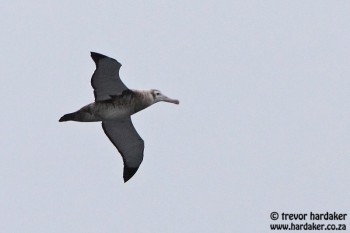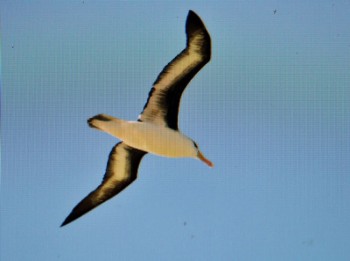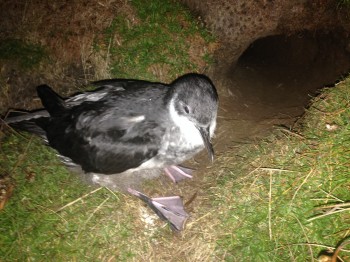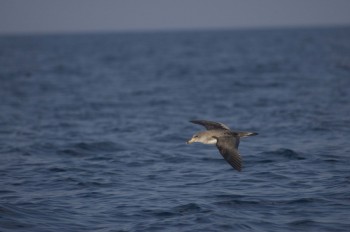Australian albatross researchers Kate Lawrence and Jarrod Hodgson who are currently stationed on sub-Antarctic Macquarie Island report that four Wandering Albatrosses Diomedea exulans have fledged from the 2104 breeding cohort. “Macca” supports one of the smallest breeding populations of this Vulnerable species, and one that has declined in size over the last several decades.
The following is quoted from the island’s on-line newsletter This Week at Macquarie Island for 6 February:
“Most recently, we have been observing last season’s wandering albatross chicks, and finding out how many 'wanderer' eggs have been laid this season. Four of the six chicks that hatched last season have fledged, and Jarrod was lucky to witness one taking its maiden flight and heading out to sea. If these youngsters survive, they will remain out at sea for several years before returning to try to find a partner."

One of the seven 2014 cohort pairs during the incubation period, photograph by Kate Lawrence
"Unfortunately though, two chicks did not make it. Necropsies revealed the most likely causes of death as starvation. This could indicate that the parents have not been able to find enough food for both themselves and to support their young. Or perhaps one or both of the parents have met an untimely fate, possibly through interactions with commercial fishing operations, particularly long-line fishing, which remains a key threat facing albatrosses worldwide.”
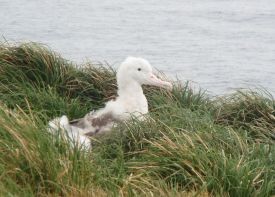
One of the two 2014-cohort chicks that died of apparent starvation, photograph by Kate Lawrence
Seven eggs were laid last year (click here) of which six hatched in March (86%) and four fledged after being banded, giving an overall breeding success of 57%.
And prospects for this year? The two researchers report just five eggs laid, suggesting a combined breeding population for the biennially-breeding Wandering Albatross on Macquarie Island of no more than 12-15 pairs.
With thanks to Kate Lawrence for information and photographs.
John Cooper, ACAP Information Officer, 08 February 2015

 English
English  Français
Français  Español
Español 